A Simple 7-Day Home Care Routine Designed for Busy Families
I’ll be honest with you — most cleaning advice for busy parents feels like it’s written by someone who’s never raced to get kids out the door, come home after a long shift, or tried to clean a kitchen while answering work emails. I’ve spent years helping working families streamline their routines, and I’ve learned one thing: you don’t need a perfect home, you need a plan that actually fits the way real families live.
If your weekdays feel packed and the weekends disappear into laundry, dishes, and “I’ll do it later,” you’re not alone. Every parent I talk to wants the same thing — a simple rhythm that keeps the house running without eating up their limited energy. That’s exactly why I built this 7-day system. It breaks the overwhelm into bite-sized tasks you can handle even on the days when life feels like a sprint.
In the intro you’re reading right now, my goal is simple: I want you to feel that this is doable. You don’t need hours. You don’t need expensive tools. You don’t need a picture-perfect routine. You just need a structure that makes sense for a working household and doesn’t fall apart the moment someone gets sick, school sends home a new form, or work runs late.
By the time you’re done with this article, you’ll have a clear weekly plan, options for 15-, 30-, and 60-minute versions, and a way to get your family involved without turning into a drill sergeant. More importantly, you’ll walk away with a schedule that gives you back your weekends — and your sanity.
Before we dive in, tell me this: what’s the one part of your home that overwhelms you the most right now?
Why a 7-Day Plan Works Better for Busy Parents Than “Deep-Clean Weekends”
If you’re anything like me, you’ve probably tried the “I’ll clean everything on Saturday” routine more times than you want to admit. And every time, the same thing happens — you start strong, hit a wall by noon, and end up spending a day you needed for rest on chores that never seem to end. That’s not a cleaning issue. That’s a system issue. Weekend deep-cleans just don’t match the pace of real working families.
A 7-day plan changes the whole experience. When you spread small tasks across the week, you stop hitting burnout. You stop playing catch-up on Sundays. And your home finally feels steady instead of swinging between chaos and cleanup marathons.
Evidence & Real Benefits You’ll Actually Feel
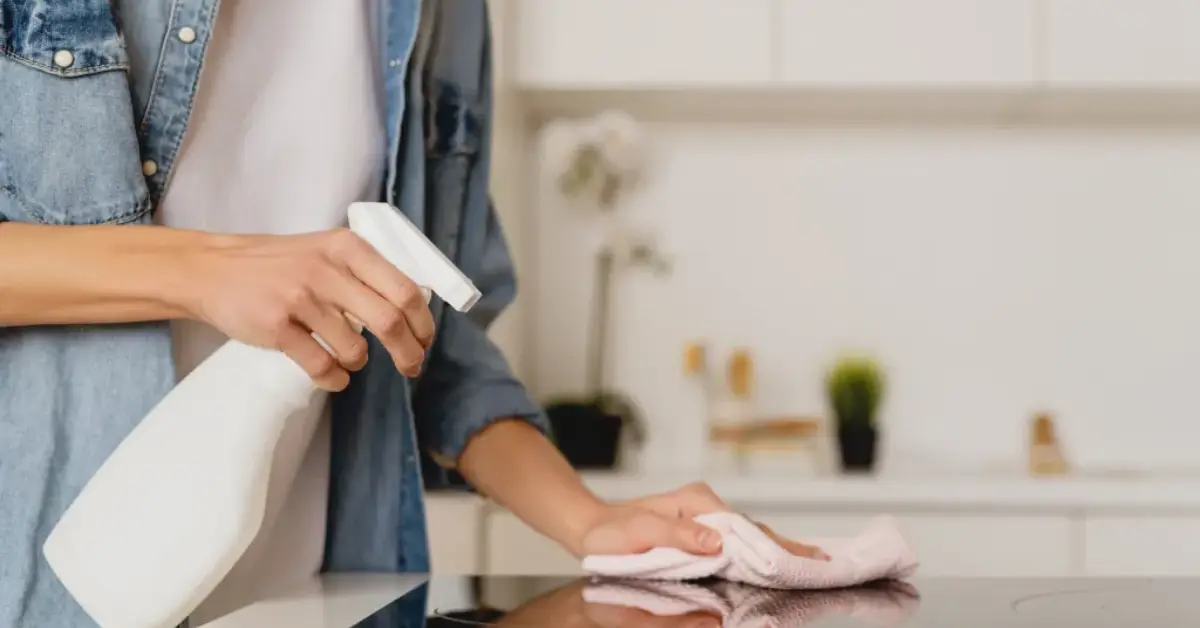
You and I can spot when something is working almost immediately. A daily structure brings a few clear wins:
- You save time without the pressure: Short, predictable tasks fit easily into evenings or small downtimes.
- You avoid the “Where do I start?” spiral: When today already has a focus, you don’t waste energy deciding.
- Your space stays steady all week: You’re no longer recovering from huge messes every weekend.
- Healthier home, fewer buildup problems: Consistency keeps the bathroom, kitchen, and common areas easier to manage.
Once these small wins stack up, your whole week feels lighter.
Common Pain Points Every Working Parent Faces
Every parent I’ve helped runs into the same obstacles. You might relate to a few:
- Too many responsibilities competing for attention
- Kids adding clutter faster than you can tackle it
- Different work schedules in the household
- Mental load exhaustion from planning and remembering everything
- No buffer time when real life throws surprises
A weekly system doesn’t erase these challenges. It simply works alongside them instead of against them.
7-Day Core Schedule
Let’s get straight to the part you can act on tonight. This is the foundation of the whole system — something you can glance at and instantly know what the day requires.
One-Line Daily Summary
Here’s the quick version of the full routine:
- Monday: Bathrooms — 20–25 minutes
- Tuesday: Living areas — 15–20 minutes
- Wednesday: Kitchen — 30 minutes
- Thursday: Bedrooms + Laundry — 25–40 minutes
- Friday: Paperwork + Entryway Reset — 15 minutes
- Saturday: Family chores + one deeper task — 45–60 minutes
- Sunday: Weekly reset (trash, prep, quick tidy) — 30–40 minutes
This isn’t a strict rulebook. It’s a simple weekly flow you can adjust to fit your home and your energy.
Checklist + Weekly Grid
Most parents like having something visible they can stick to a wall, keep on the fridge, or share with the family.
A ready-made checklist helps because:
- It’s easy to follow
- Kids can look at it without asking you
- It reduces the mental load
- Everyone knows the plan for the day
To back this up with a trustworthy source, you can reference Martha Stewart’s cleaning schedule guidance for credibility.
How to Use This Plan (For 15, 30, or 60 Minutes)
Your time won’t look the same every day. Some evenings you barely get a moment. Other days you might find half an hour between tasks. That’s why you need flexible options:
- If you only have 15 minutes:
- Do the top 1–2 tasks for that day
- Focus on surfaces and quick resets
- Skip deeper jobs
- If you have 30 minutes:
- Complete the core tasks
- Add one medium-level job (appliances, quick declutter)
- If you have 60 minutes:
- Do everything on the list
- Add one rotating deeper job (windows, fridge wipe-out, baseboards)
This flexibility is what keeps the system alive. You don’t fall behind because of one hectic day — you simply adjust and keep moving.
Daily Breakdown: Exact Tasks, Time Estimates & Who Does What
I’ve tested this structure with dozens of working families, and the biggest win is how it removes guesswork. When everyone knows the task, the time needed, and who’s handling what, the whole week becomes smoother. You can share these lists with your partner, older kids, or even assign days to the person who’s home earlier.
Day 1 — Monday: Bathrooms (20–30 minutes)
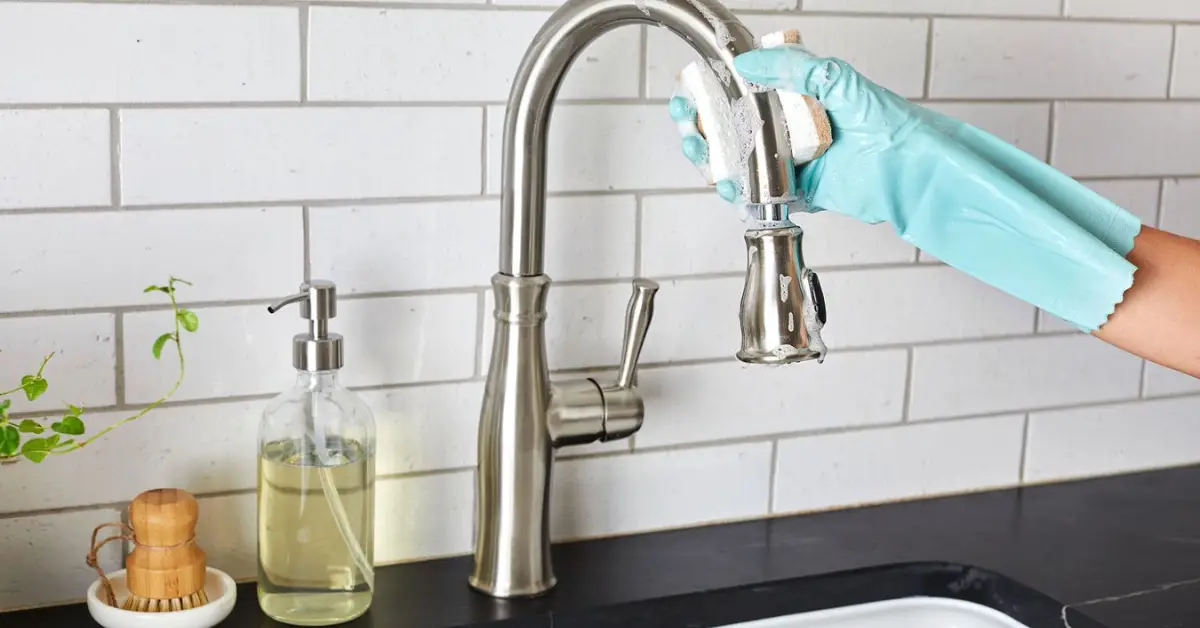
If you start the week with clean bathrooms, the whole home feels fresher. It also keeps hygiene issues from piling up.
Tasks
- Quick wipe of sinks and faucets
- Scrub toilet bowl
- Spray and rinse shower/tub
- Replace towels
- Empty trash
- Restock soap, shampoo, toilet paper
Weekly deep step (rotate weekly):
- Scrub grout
- Clean shower curtain/liner
- Wipe bathroom cabinets
Who does what:
- You: surfaces + shower
- Partner: toilet + floors
- Kids (8+): replace towels + restock supplies
Day 2 — Tuesday: Living Room, Dining & Common Areas (15–30 minutes)
These are the spaces everyone sees first — and the ones that set the tone of “clean” or “messy” the fastest.
Tasks
- Pick up toys, books, blankets
- Wipe coffee/dining tables
- Vacuum or sweep
- Fluff cushions
- Quick dust on visible surfaces
Who does what:
- You: wipe + dust
- Partner: floors
- Kids: toy pickup + blanket folding
Day 3 — Wednesday: Kitchen (30–45 minutes)
A midweek kitchen reset protects your family’s health and keeps food prep stress lower.
Tasks
- Clear and wipe counters
- Wipe stove top
- Empty sink + start dishwasher
- Wipe small appliances
- Fridge “mini sweep” (toss expired items)
- Sweep floor
If you want to avoid the hidden habits that invite pests, especially in the kitchen, you can check out these surprising cleaning habits that attract mice so you can adjust your routine before those issues show up.
Rotating weekly deep step:
- Clean microwave
- Wipe inside fridge shelves
- Degrease cabinet fronts
Who does what:
- You: counters + stove
- Partner: floors + dishes
- Kids (10+): empty dishwasher
Day 4 — Thursday: Bedrooms + Laundry Catch-Up (20–40 minutes)
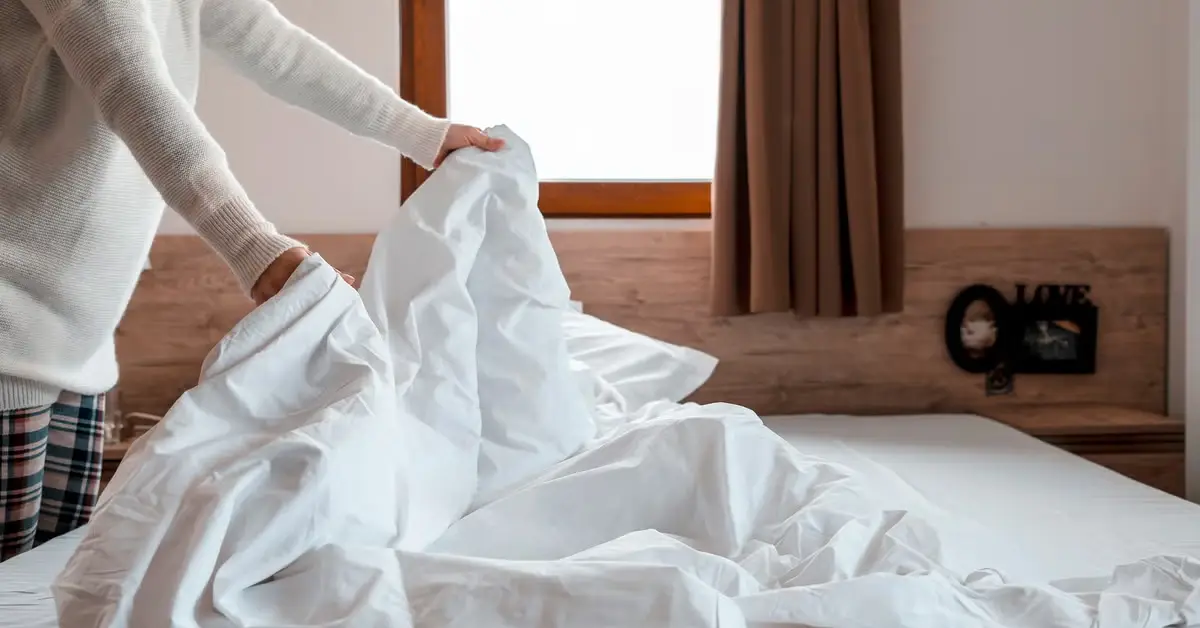
Bedrooms affect sleep, stress levels, and how mornings feel — so this day pays off all week.
Tasks
- Change sheets
- Quick pick-up of clothes, toys, random piles
- Fold and put away laundry
- Dust nightstands
- Light vacuuming
Who does what:
- You: sheets + tidy
- Partner: laundry
- Kids: put away their clothes/toys
Day 5 — Friday: Paper, Entryway & Car Reset (15–25 minutes)
This is the “administrative” day. It clears mental clutter and sets up a lighter weekend.
Tasks
- Sort mail
- Empty school folders
- Tidy entryway (shoes, backpacks, coats)
- Quick sweep
- Two-minute car tidy (remove trash, cups, wrappers)
Who does what:
- You: mail + paperwork
- Partner: entryway + car
- Kids: hang backpacks + put shoes away
Day 6 — Saturday: Flexible Family Day + One Deeper Task (45–60 minutes)
Saturday should never feel like punishment. When kids help, even small tasks teach responsibility and reduce your load.
Kid-friendly chores:
- Water plants
- Wipe low surfaces
- Match socks
- Help with pet tasks
Rotating deep tasks:
- Mop full house
- Wash windows
- Declutter pantry
- Wipe baseboards
- Rotate seasonal clothing
Who does what:
- You: deeper task
- Partner: floors or windows
- Kids (per age): small chores that build habits
Day 7 — Sunday: Weekly Reset & Prep (30–60 minutes)
This isn’t about “cleaning.” It’s about making the next week easier.
Tasks
- Wipe food-prep counters
- Empty all trash
- Prep kids’ outfits for Monday
- Quick tidy of living areas
- Refill snacks or school supplies
- Look at the week’s schedule
Why this matters: A calm Sunday evening leads to smoother mornings and fewer midweek fires to put out.
Micro-Tasks for In-Between Moments (3–5 minutes)
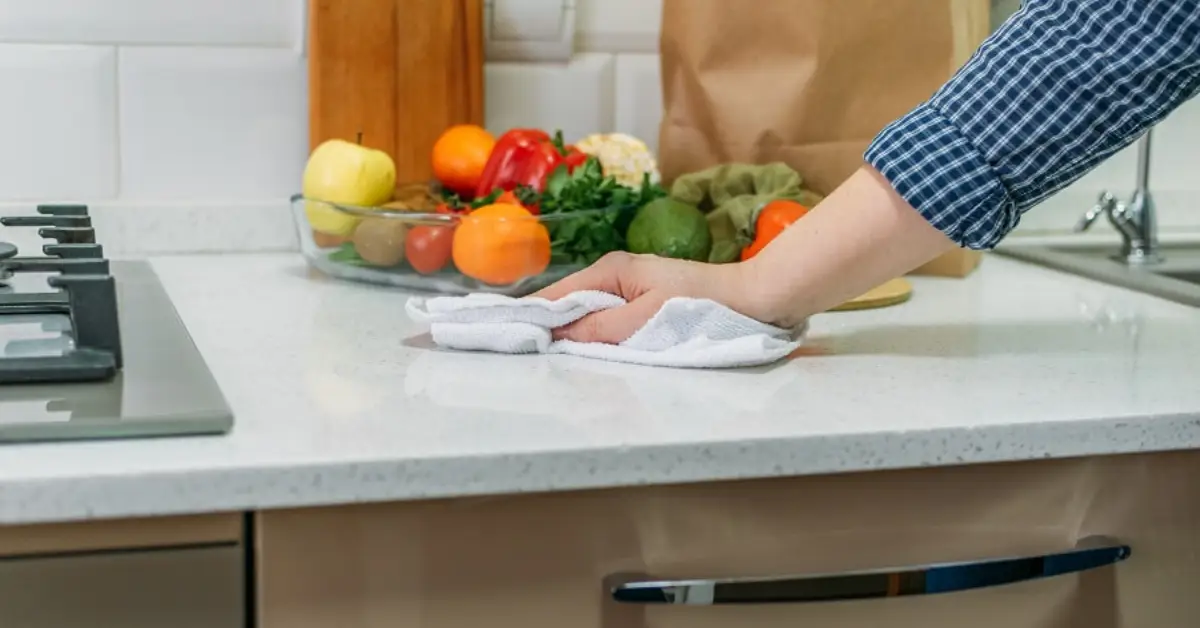
These tiny actions keep the whole house manageable so you never fall behind:
- Wipe counters after breakfast
- Two-minute post-dinner table reset
- Pick up visible clutter while walking room to room
- Start laundry before bed
- Wipe faucet after tooth brushing
These small habits prevent the “weekend avalanche” effect.
How to Customize the Plan for Your Family (Shifts, Kids, Pets, Home Size)
One schedule won’t fit every home, so this section helps you adjust the system without losing the routine.
For Shift Workers & Split Schedules
If you and your partner work different hours, the easiest fix is switching tasks based on who’s home during lower-stress windows. A rotating structure solves that, and it’s something many working parents talk about in guides like the one from Blueland.
Practical adjustments:
- Swap days (e.g., kitchen on Tuesday instead of Wednesday)
- Use 10-minute partner handoffs
- Keep a shared weekly board for clarity
- Assign “backup tasks” for whoever has more energy that day
For Families with Toddlers vs. Teens
Toddlers (2–5):
- Put toys in baskets
- Help wipe lower shelves
- Carry laundry to basket
Kids (6–9):
- Fold small clothes
- Clear their own table space
- Replace towels
Teens (10–16):
- Vacuum
- Load/unload dishwasher
- Help with bathrooms or trash
- Organize shared spaces
This keeps the routine balanced and teaches responsibility.
For Small Homes vs. Large Homes
Different sized homes need different pacing.
Small homes / rentals:
- Combine two small tasks on one day
- Reduce deep-clean frequency
- Use micro-tasks more often
Large homes:
- Split tasks by zones
- Assign kids a regular weekly zone
- Increase deep tasks every 2–3 weeks
Time-Saving Tools, Apps, and Cheap Gear That Make the Plan Work
When I started helping busy families build sustainable routines, I realized something important: most people don’t struggle with effort — they struggle with friction. The right tools and simple systems remove that friction so you can finish daily tasks faster and without burnout.
15-Minute Timer Technique & Helpful Apps
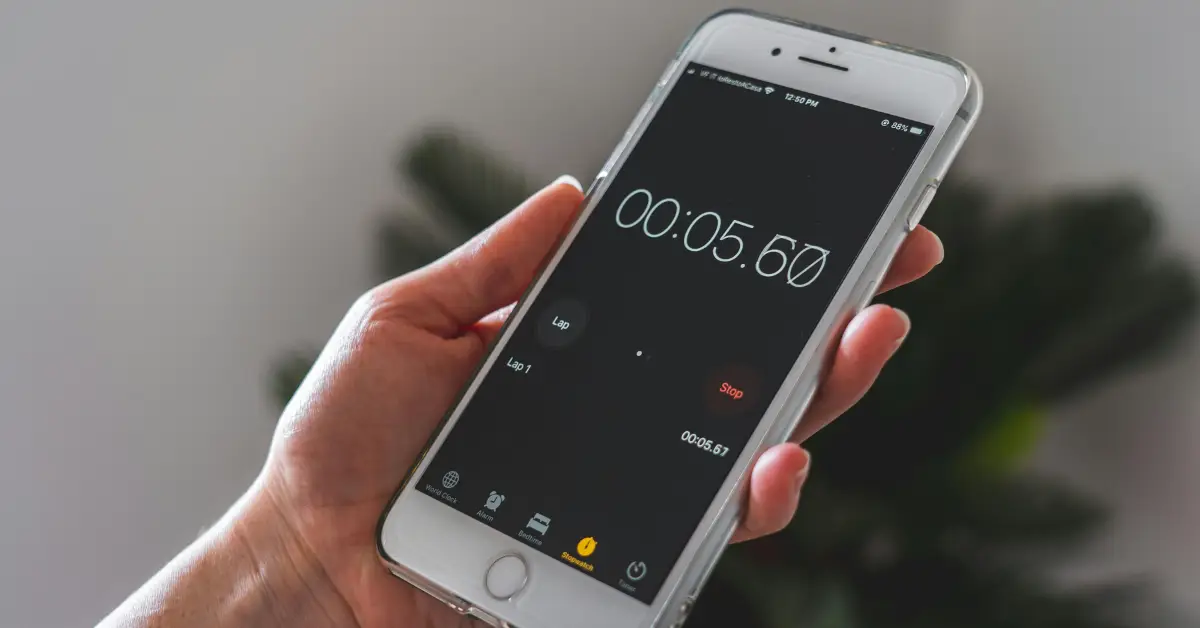
A short timer is one of the most effective motivation boosters you can use. When you give yourself a small window, you work with urgency instead of dragging tasks out.
What you can use:
- Timer or stopwatch on your phone
- Pomodoro-style apps (15/20/30-minute intervals)
- Shared family reminders (one alert for everyone)
- A family calendar app that lets you assign chores and track progress
These tools cut procrastination and make the daily plan feel doable even on hectic nights.
Best Multi-Use Cleaning Tools (Low Cost, High Impact)
You don’t need a cupboard full of products. A few multi-use tools handle almost everything and save you mental energy.
Top picks:
- Lightweight vacuum or stick vac — easy to grab, ideal for daily floors
- Reusable microfiber cloths — work on mirrors, counters, tables, and dusting
- Multi-surface cleaner — one bottle replaces half your cleaning supply shelf
- Scrub brush with handle — perfect for bathrooms and kitchen corners
When you cut down the number of tools, every task becomes easier to start and finish.
Eco + Budget-Friendly Options
A lot of families I work with want to keep things affordable and environmentally conscious at the same time. That’s where refill systems and reusable products help. You’ll find practical examples in resources like the Sabrina’s Organizing daily cleaning checklist for busy parents.
Practical budget switches:
- Store-brand cleaners instead of multiple specialty products
- Refill tablets for bottles you already own
- Washable microfiber cloths instead of disposables
- Concentrated cleaners to reduce cost per use
These choices save money long-term and reduce clutter under your sink.
How to Get the Family On Board: Scripts, Rewards & Routines That Work
Most parents don’t struggle with tasks — they struggle with getting the household aligned. When the family participates, the whole plan becomes lighter for everyone.
30-Second Scripts That Actually Work
Sometimes it’s not what you ask, but how you ask.
Partner script: “I’m trying this weekly system so we both get more free time on weekends. Today’s task only takes 20 minutes. Can you take floors if I handle the counters?”
Kid script: “We’re doing a quick reset so the house feels nicer for everyone. Can you be in charge of toys for the next 5 minutes?”
These short, calm requests avoid negotiation and make expectations clear.
Simple Reward Systems & Checkmarks
Small rewards motivate kids and adults more than long lectures ever will.
Ideas that work:
- A weekly checkmark chart
- Kids earn a small privilege (extra story, extra screen block, or weekend pick)
- A family “finished the week strong” treat
- Stickers for younger kids who help consistently
Behavior changes when the reward is visible and immediate.
Morning/Evening Micro-Routines
Pairing chores with habits you already do makes them automatic.
Morning:
- Wipe counters after breakfast
- Start a small load of laundry
Evening:
- Two-minute toy reset before bedtime
- Load dishwasher before bed.
- Quick sweep of the entry area
Once these tiny routines stick, the weekly plan feels effortless. If you want a simple nighttime rhythm that keeps the kitchen under control, you might like these quick kitchen habits to do before bed — they take only a few minutes and make mornings smoother.
Common Roadblocks & Fixes (If It’s Not Working Yet)
Every family hits snags in the first week or two. That’s normal. What matters is having realistic solutions ready.
“I Don’t Have Time”

This is the number one concern for working parents, and the solution is usually simpler than it feels.
Fixes:
- Compress tasks using a 10-minute timer
- Delegate small pieces (kids pick up toys, partner handles floors)
- Batch tasks while cooking (wipe counters during simmer time)
Focusing on micro-wins keeps the system alive.
Kids Don’t Follow Through
This happens in almost every home — kids need structure and visible expectations.
Fixes:
- Use a chart they can see
- Assign small, age-appropriate tasks
- Give clear deadlines (“Before dinner”)
- Keep stakes small but consistent
Consistency beats reminders every time.
Parent Burnout From Doing Everything Alone
When one person silently carries the load, resentment builds and the plan collapses.
Fixes:
- Rotate days so nobody owns the same job forever
- Make a two-column list (your tasks vs partner’s tasks) and rebalance
- Bring in paid help occasionally if the load is overwhelming
- Reduce deep-clean frequency to protect energy
A sustainable routine should support you — not drain you.
If you’re trying to break old patterns that slow you down, this list of cleaning habits to ditch for a healthier home can help you replace outdated routines with better habits that work with your new weekly flow.
Two-Week Trial Plan + How to Measure Success
Most families don’t need a long commitment to see whether this system works. Two weeks is enough to notice real shifts — in your home, your stress levels, and how much time you get back on weekends. A short trial also keeps you motivated because the finish line is close.
14-Day Checklist for Tracking Progress
If you track even a few simple metrics, you’ll be able to see real improvement instead of just hoping things feel better.
Here’s what I suggest measuring:
What to track each day:
- Minutes spent on that day’s task
- Clutter level (low / medium / high)
- Whether the task was shared or done solo
- How much time your weekend stayed free
- Overall stress level at the end of the day (quick 1–5 rating)
A simple tracker you can make:
- A weekly grid with checkboxes
- Columns for “time spent,” “shared,” and “clutter level”
- A small notes section for what worked or didn’t
Even a basic tracker keeps you aware of what’s improving.
What Success Looks Like After 2 Weeks vs. 2 Months
Realistic expectations matter. Not everything transforms overnight — but the early wins show up quickly.
After 2 weeks, you should notice:
- You’re spending less time cleaning overall
- Fewer piles forming in common areas
- Weekends feeling lighter
- Less decision fatigue
- Fewer arguments about “who’s responsible for what”
After 2 months, you should see:
- The house staying consistently tidy with less effort
- Kids following routines with fewer reminders
- A calmer morning and evening flow
- Most chores taking less time than they used to
- A clear sense of control instead of constant catch-up
These are the results families stick with long-term — because the plan becomes part of your rhythm, not extra work.
Bonus: Quick Guest-Ready 10-Minute Clean Routine
Every family has been there — someone texts, “We’re nearby, mind if we stop in?” and you look around in mild panic. You don’t need a perfect home. You just need a system that makes it look pulled-together fast.
The 10-Minute Sequence
Focus only on what guests notice first. You don’t need perfection — you need a quick reset that changes how the space feels.
Use this order:
- Pick up visible clutter from the living room
- Fold blankets, fluff cushions
- Wipe coffee table and dining table
- Load any messy dishes into the dishwasher
- Wipe kitchen counters quickly
- Empty small trash bins
- Run a fast vacuum sweep in entry and living room
- Close doors to messy rooms you won’t use
That’s it. Ten minutes. And your home feels calm, intentional, and ready.
Conclusion
If you’ve ever felt like your home is running you instead of the other way around, this weekly plan gives you a way out. Nothing here is complicated. Nothing demands huge blocks of time. The real power is consistency — small actions done at the right moment.
After two weeks, most families feel the difference. After two months, the routine becomes so natural that you barely think about it. Your home feels lighter. Your mind feels clearer. And your weekends finally belong to you again.
I built this guide because I’ve seen how small systems can change a home. If it helps you breathe easier or find a little more energy at the end of the day, then it’s doing its job.
Before You Go — I’d Love to Hear From You
- Which part of the 7-day plan are you trying first?
- Do you want a printable checklist or a mobile-friendly version next?
- What’s the biggest cleaning challenge in your home right now?
Drop your thoughts in the comments — your feedback helps me shape more tools and guides for real families like yours.
And if you want more practical, no-nonsense home systems, visit Build Like New for more guides, templates, and time-saving ideas.
Disclaimer: This guide is based on general household management practices and personal experience. It’s not a substitute for professional cleaning or organizational services. Always adapt routines to what fits your home, schedule, and health needs.


